Useful tips for growing eggplants in open ground

Eggplant is a heat-loving plant native to India. The preference for high temperatures and calm weather contributed to the fact that for a long time crop cultivation was carried out preferably in hot climates. In temperate latitudes, the plant was planted in a greenhouse, however, with the right approach, you can get a good harvest by growing eggplants in open ground.
Content:
- Eggplant varieties for open ground
- Features of germination of eggplant seeds
- Planting eggplant seedlings
- Caring for eggplants in open ground
Eggplant varieties for open ground
Eggplant is considered a difficult crop to grow. Productivity directly depends on climatic conditions. For open ground, it is better to use less demanding varieties: their yield is average or above average, but the likelihood of getting fruit in open ground is much higher than that of high-yielding hybrids.
When choosing an eggplant variety, first of all, pay attention to the ability of the plant’s fruits to ripen in open ground. The taste of the vegetable is no less important.
The following varieties are suitable for growing eggplants in temperate climates:
- Alekseevsky
- Robin Hood
- Diamond
- Pink flamingo
- Vakula
Early ripening variety "Alekseevsky" grows up to 70 cm in height. The bush produces dark purple cylindrical fruits. The length reaches 15 cm. The pulp is white, dense, and not bitter. The average fruit weight is 150 g. The average yield is more than 6-8 kg/m2.
The early ripening variety "Robin Hood" produces ripe fruit 110 days after germination. The height of the bush reaches 110 cm. The eggplant is pear-shaped and lilac in color. Weight about 300g, length – 17cm, diameter – 9cm. It is mainly grown for pickling and preservation as it perfectly preserves its taste and harmonizes pleasantly with spices.
Eggplant "Almaz" is recognized as one of the most productive varieties in open ground. A bush 65 cm high produces ripe fruits 150 days after germination. Under good weather conditions, you can harvest up to 8 kg/m2 of vegetables. The color of eggplant varies from dark purple to brownish-brown. The average weight of the fruit is 150 g, cylindrical in shape, length 17 cm, diameter 9 cm.
The “Pink Flamingo” bush grows up to 150 cm. Ripe fruits are obtained on the 120th day. The weight of eggplant reaches 450 g. The variety has a narrow, slightly curved cylindrical fruit. The color of the peel is pink, the flesh is white, and has a pleasant taste.
“Vakula” is an early ripening variety and bears fruit on the 110th day. A ripe eggplant weighs up to 150 g, has a purple peel and white flesh, and an ellipsoid-shaped fruit.
When planting eggplants in open ground, it is better to give preference to early ripening varieties, this will increase the chances of harvesting. When choosing a variety, it is important to pay attention to plant resistance to disease, as this is one of the reasons for a poor harvest.
Features of germination of eggplant seeds
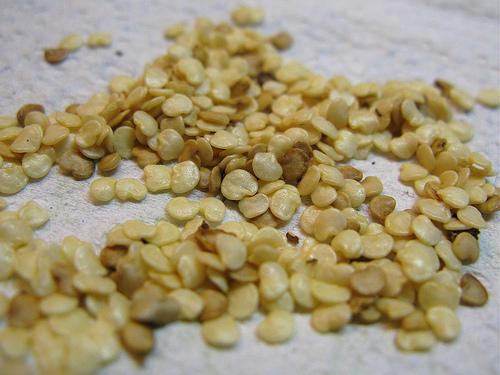
The time from sowing a plant to obtaining a ripe fruit for early ripening varieties is about 140 days, therefore, to obtain a harvest in early/mid autumn, seeds must be planted in late March - early May. But at this time there is a high probability of night frosts.
Eggplant is a heat-loving plant and if the temperature drops below 13 degrees, its growth completely stops. The optimal solution for eggplant is seedlings.
The process of growing seedlings can be divided into 3 main stages: preparation, planting and care.
Preparation for sowing consists of:
- Testing seeds for germination. To do this, just soak the seeds in warm water for 5 minutes. Seeds that have sunk to the bottom of the container are suitable for planting.
- Preparing seeds for planting. Eggplant seeds are difficult to germinate, but this process can be speeded up a little if you soak the seeds in aloe juice for a day before planting.
- Soil preparation. Eggplants are very demanding on the composition and quality of the soil. It is better to germinate eggplant seeds in turf soil. Before planting, humus, peat, superphosphate and wood ash are added to it. You can also add sawdust; they will make the soil more loose.
Landing. Seeds are planted in prepared containers, these can be cups, cassettes or boxes. The seeds are planted to a depth of 1.5 cm with a distance of 3 cm, then the containers are covered with film and placed in a warm, dark place with a temperature of at least 25 degrees.
Care consists of regular watering with warm water, the soil should not dry out, but you should not create a swamp, as this can cause the appearance of a “black leg”. As soon as the entrances appear, the boxes are moved to a bright place, but not in direct sunlight. In the first week from germination, the temperature is maintained at 16 degrees, all subsequent weeks around 25.
The seedling period of eggplants lasts up to 70 days; throughout this time it is necessary to regularly loosen the soil.The plant is accustomed to a 12-hour day of light, so to improve growth conditions, it is given up to 12 hours of light.
Often, shortly before planting seedlings in open ground, they are hardened off. At the beginning of hardening, the temperature is lowered to 15 degrees for a couple of hours, in subsequent days the temperature is gradually lowered to street temperature, and the time is increased to a day.
Germinating eggplant seeds is a rather troublesome process, but these small efforts will help to further increase the quantity and quality of the harvest.
Planting eggplant seedlings
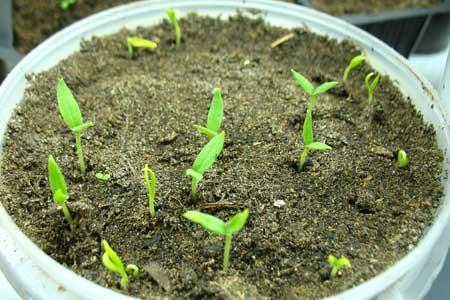
One of the most important aspects of planting seedlings is the correct choice of site. When choosing a site, you should solve the following problems:
- What could be the predecessor cultures?
- Crops that can become neighbors of eggplants
- What soils are best suited?
- Sunlight intensity
- Wind speed and degree of moisture in the area
The predecessors of eggplants can be almost any plant with the exception of nightshades. These include pepper, eggplant, potatoes, and tomatoes. The time gap between landings is at least three years. The best predecessors are cabbage, onions, carrots and legumes.
Since eggplant does not like shade, it is better to plant low-growing crops in the neighborhood: onions, sorrel, garlic.
Light, loose sandy soils rich in humus are optimal for eggplants. If the soil is loamy or clayey, then you can add humus, peat, sawdust and sand, this will significantly improve the yield of the plant.
The plant loves sunlight, so it is better to choose a well-lit place, without shadow. As for the wind, eggplants must be protected from northern winds. An excellent way is to plant coulis from, for example, corn.Eggplants are more inclined to dry rather than damp soil, so for planting it is better to look at the area at the top.
Seedlings are planted when the plants reach 12 cm in height. By this time, they have formed about 7 true leaves. The bushes are planted in ribbons at 30 cm intervals between the bushes. The distances between ribbons are 90 cm, and between rows 50 cm.
Before planting the bush, pour 2 liters of water into the hole, and repeat abundant watering several times after 3 days.
It is important to note that seedlings are planted only after the spring frosts are behind us and the ground has warmed up sufficiently.
Choosing the right area for sowing is one of the essential factors for obtaining a good harvest, so it is worth planning and preparing the place for eggplants in advance.
Caring for eggplants in open ground
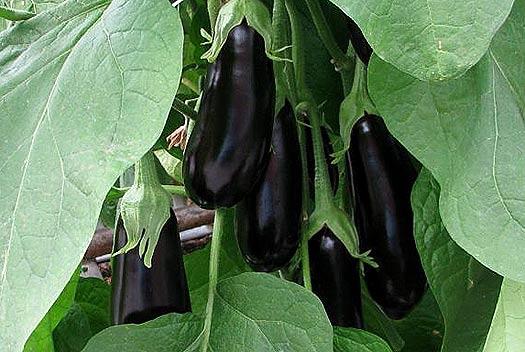
First of all, care consists of watering the plant once every 10 days. The volume of water is calculated based on the fact that the soil should be wet to a depth of 50 cm. During growth, the plant requires three main feedings: during mass budding, before mass harvesting of fruits and after it.
To increase the weight of the fruit, 4 of the largest stems are left on the plant, the rest are removed. It is also necessary to regularly remove yellowed leaves and weeds. The last important point of care is pest control. To do this, the plant is treated in a timely manner with specialized preparations.
For getting great eggplant harvest It is necessary to carefully consider all stages, from choosing seeds to harvesting. At first, it may seem that growing eggplants in open ground is a difficult task, but hard work and careful attention to the plant will allow you to get what you want.
Watch how to grow eggplants in the video:
Interesting information about the vegetable garden

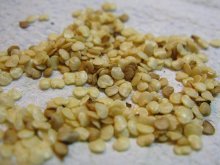
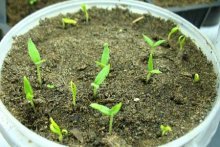



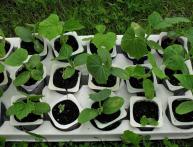


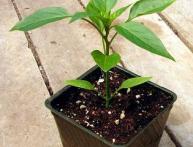


Comments
I love eggplants and they are not difficult to grow. One problem is the Colorado potato beetle. He likes eggplants more than potatoes. And you can’t spray the fruit. As soon as you collect the beetles, within an hour there will be plenty of new ones. We put nylon stockings on the eggplants. This is the only way to preserve some fruits.
I also really like eggplants, but we still grow them in a greenhouse. It's more reliable. There is confidence that you will definitely get a harvest.